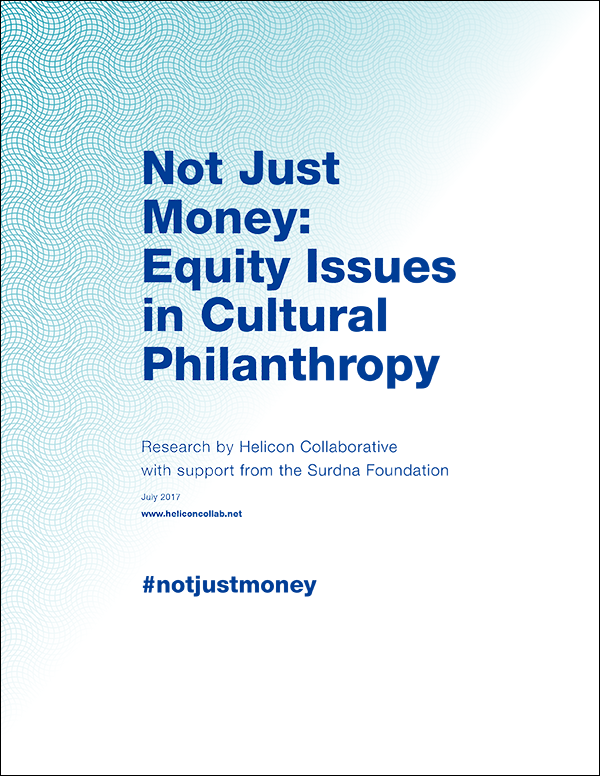Philanthropic practice
July 2017, 37 pages. Surdna Foundation, 330 Madison Avenue, 30th Floor, New York, NY 10017. (212) 557-0010. http://surdna.org.
Download:
Read More...For more than a decade, members of GIA have urged the Grantmakers for Education membership to better recognize the positive impact arts education classes and programs afford to good teaching, good learning, and an overall well-rounded education for students. Arts education advocates hoped to see more sessions at Grantmakers for Education conferences highlighting the value of arts education and more collaboration between arts education funders and education funders.
Read More...In many ways, it has been a heartening year for champions of the literary arts.
Read More...Two years ago, I had breakfast with a colleague — very nice guy who has helped build the social, or “impact,” investing sector. I shared my ideas about how to connect impact investing with the arts.
To him, investing in the arts meant buying a Picasso or a Van Gogh, collecting art objects. He agreed there was a market for fine art. But impact investing in the arts? He was dead against it.
Read More...As our country prepares for a Trump presidency, the issue of economic revitalization in rural American has much more urgency than eight months ago when I started collecting data for this work. Here is a sampling of headlines from coverage by the New York Times of the economic decline in the rust belt, or more specifically, coal country and Appalachian towns: “Trump’s Promises Will Be Hard to Keep, but Coal Country Has Faith” (Nov. 28, 2016); “A Bleak Outlook for Trump’s Promises to Coal Miners” (Nov.
Read More...What can you do when times are uncertain, and yet a clear opportunity to advance a collective agenda presents itself? Take action.
Read More...The League of American Orchestras’ upcoming national conference in Detroit falls just days before the fiftieth anniversary of the 1967 Detroit uprising, the largest urban disruption in America since the Civil War. According to Detroit Symphony Orchestra (DSO) president Anne Parsons, the 1967 riot was the context for the orchestra’s fellowship program for African American musicians.
Read More...Story matters, and we are at a pivotal moment in which there is a growing understanding that narratives that move hearts and minds are critical. Those of us who work at the intersection of the arts and social justice have known this for some time — in the words of Jeff Chang, “cultural change precedes political change” — but it has become apparent to many others that without compelling storytelling, policy platforms do not stick.
Read More...DataArts is a national nonprofit service organization that supports data-informed decision making in the arts and cultural sector primarily by providing access to high-quality financial and programmatic data collected through its flagship service, the Cultural Data Profile (CDP).
Read More...On May 25, 2016, Grantmakers in the Arts gathered a cross-section of twenty-eight funders from the arts and environmental sectors for the Arts and Environmental Sustainability Thought Leader Forum at the New York Community Trust. Most foundations in attendance were represented by two people: a person from the arts and a person from the environment, each of whom were interested in collaborative work at this intersection. Helicon Collaborative organized and facilitated the session.
Read More...
